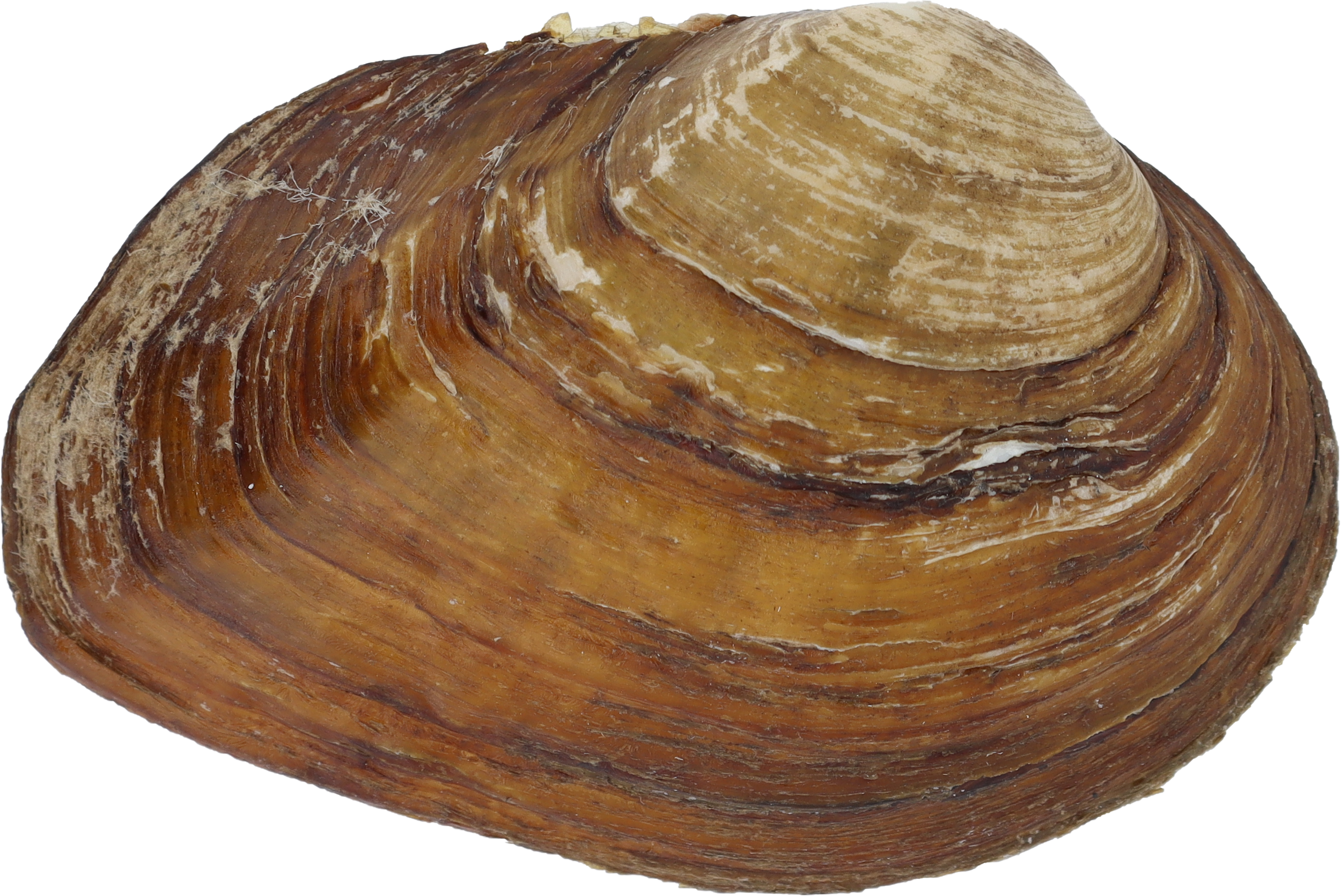Fusconaia flava (Rafinesque, 1820)
Wabash Pigtoe
Distribution: Distributed throughout the entire Mississippi River drainage from western New York to eastern Kansas, and south to Texas and Louisiana. The northern extent of the distribution includes Lake Michigan, Lake Huron, Lake St. Clair, and Lake Erie the drain into the St. Lawrence River and the Red River of the North-Nelson Rivers that drain into Hudson Bay. Potentially occurs in the Tombigbee River, Alabama but specimens from the Mobile Basin have historically been identified as Fusconaia cerina. Widespread in both the Arkansas and Red River systems in eastern Oklahoma. Populations sampled from the Little River system in Oklahoma and Arkansas were found to be genetically unique using a mitochondrial DNA marker (Inoue et al. 2018). Moreover, individuals sampled from the Neosho River system in Kansas and Osage River in Missouri were also found to be a genetically distinct lineage using mitochondrial DNA, which may be attributable to Fusconaia hebetata (Burdick and White, 2007) (Campbell and Lydeard, 2012).
Life History and Ecology: Frequently found in small to medium sized to large rivers in stable substrate. Fusconaia flava in particular is known to show large degrees of conchological variation that is presumably dependent on environmental conditions, with individuals that inhabit small streams possessing thin, compressed shells and large river individuals possessing more inflated shells. Short-term brooder with pelagic conglutinates that reportedly uses minnows as host fishes. Equilibrium life history strategy. Widespread in eastern Oklahoma streams and rivers, and often abundant.
Special Status: none
Shell Description: click here for shell description
Literature cited:
Burdick, R. C., & White, M. M. (2007). Phylogeography of the wabash pigtoe, Fusconaia flava (Rafinesque, 1820)(Bivalvia: Unionidae). Journal of Molluscan Studies, 73(4), 367-375.
Campbell, D. C., & Lydeard, C. (2012). Molecular systematics of Fusconaia (Bivalvia: Unionidae: Ambleminae). American Malacological Bulletin, 30(1), 1-17.
Inoue, K., Hayes, D. M., Harris, J. L., Johnson, N. A., Morrison, C. L., Eackles, M. S., ... & Randklev, C. R. (2018). The Pleurobemini (Bivalvia: Unionida) revisited: molecular species delineation using a mitochondrial DNA gene reveals multiple conspecifics and undescribed species. Invertebrate Systematics, 32(3), 689-702.


